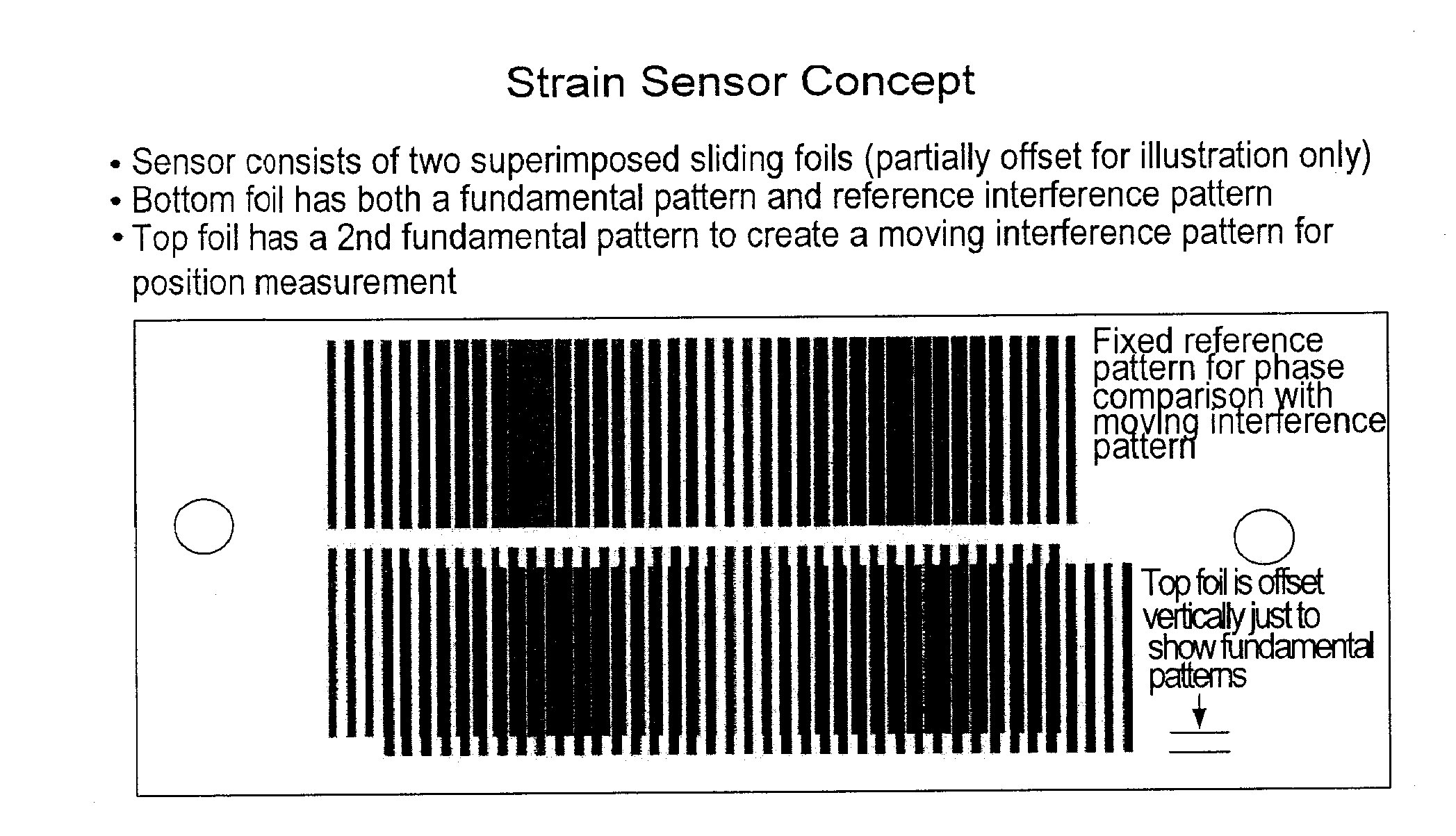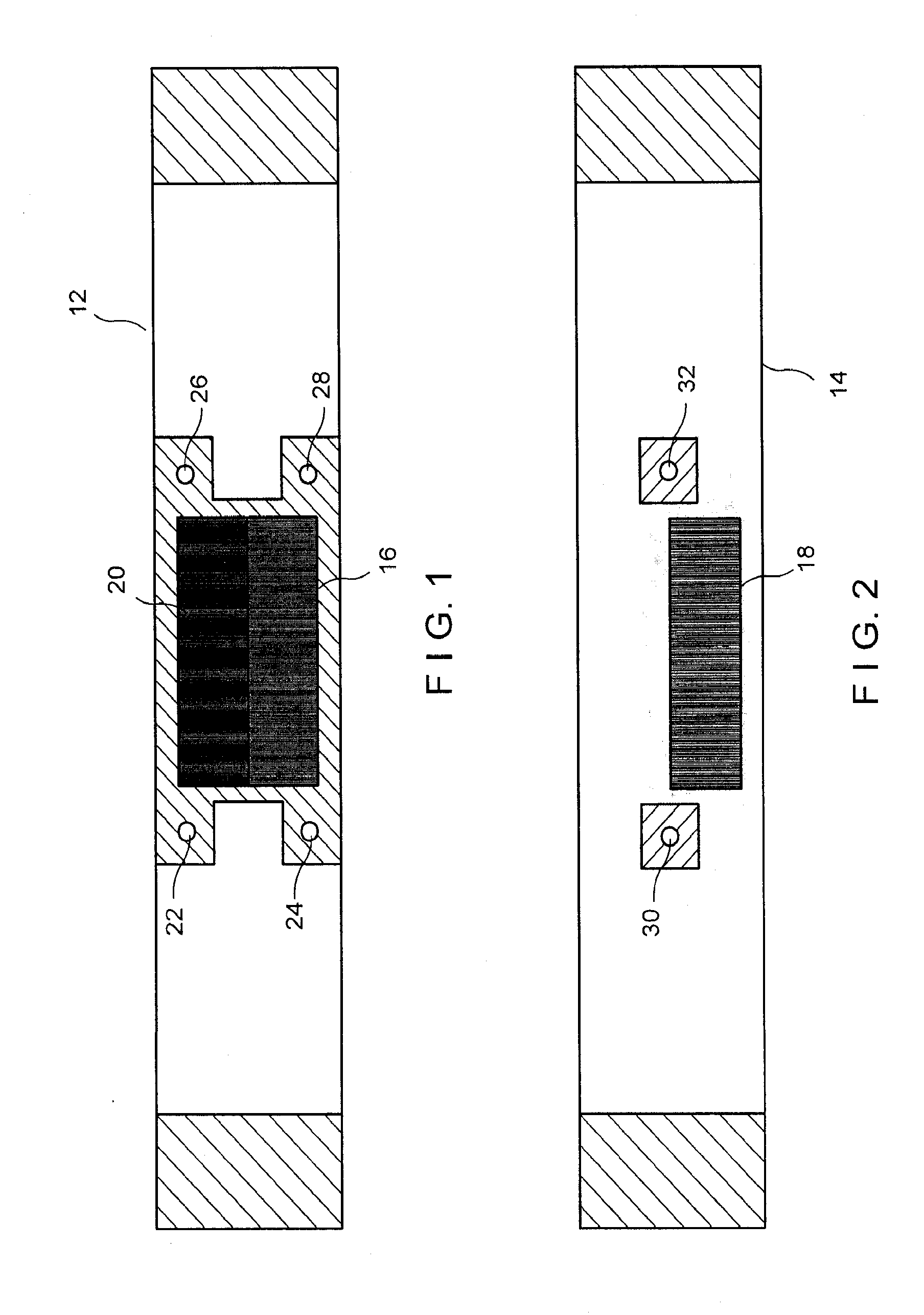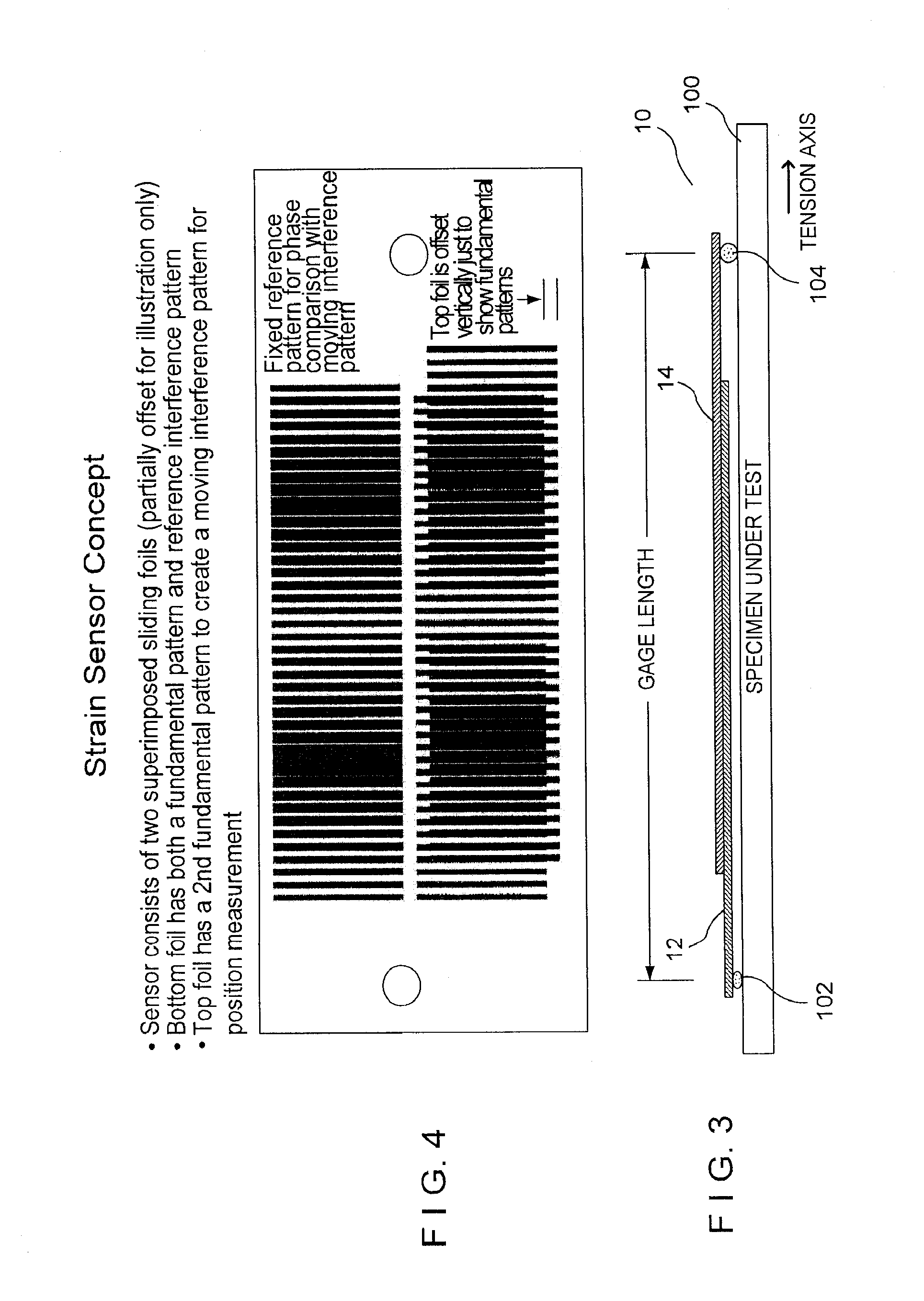Remote displacement sensor, including an optical strain gauge, an assembly and system therewith
- Summary
- Abstract
- Description
- Claims
- Application Information
AI Technical Summary
Benefits of technology
Problems solved by technology
Method used
Image
Examples
Embodiment Construction
[0028]Referring now to the drawings in detail wherein like numerals indicate like elements throughout the several views, one sees that FIGS. 1-4 illustrate the structure of the strain gauge 10 which is one embodiment of a remote displacement sensor of the present disclosure. FIGS. 1 and 2 illustrate the bottom layer 12 and top layer 14, respectively. The bottom and top layers 12, 14 are typically thin, flexible transparent foils with patterns printed thereon, but other substrates, including rigid substrates, could also be used. The patterns are typically printed on the foils at 2540 dots per inch (10 micrometers per pixel) using established imagesetter technology, or any other suitable method which may vary with the scale or size of the application. Bottom layer 12 includes a first pattern area 16 with parallel lines spaced at a first fundamental frequency of a moiré pattern, while top layer 14 includes a second pattern area 18 with parallel lines spaced at a second fundamental freq...
PUM
 Login to View More
Login to View More Abstract
Description
Claims
Application Information
 Login to View More
Login to View More - Generate Ideas
- Intellectual Property
- Life Sciences
- Materials
- Tech Scout
- Unparalleled Data Quality
- Higher Quality Content
- 60% Fewer Hallucinations
Browse by: Latest US Patents, China's latest patents, Technical Efficacy Thesaurus, Application Domain, Technology Topic, Popular Technical Reports.
© 2025 PatSnap. All rights reserved.Legal|Privacy policy|Modern Slavery Act Transparency Statement|Sitemap|About US| Contact US: help@patsnap.com



